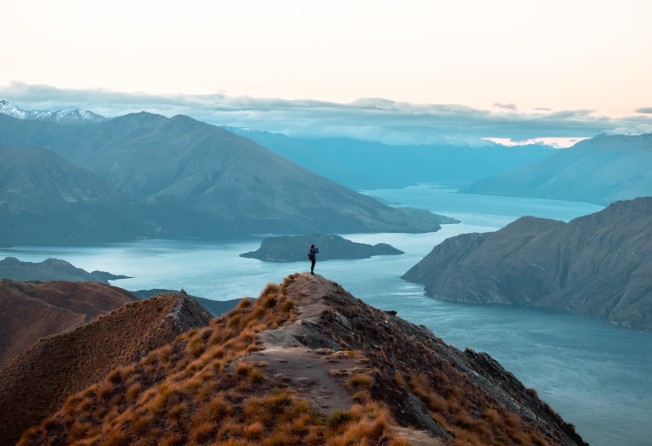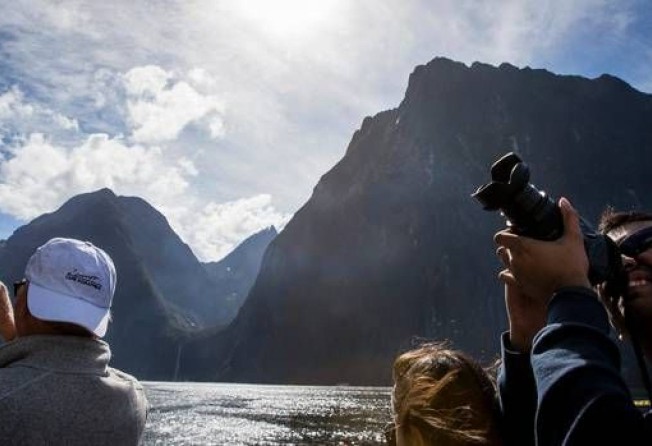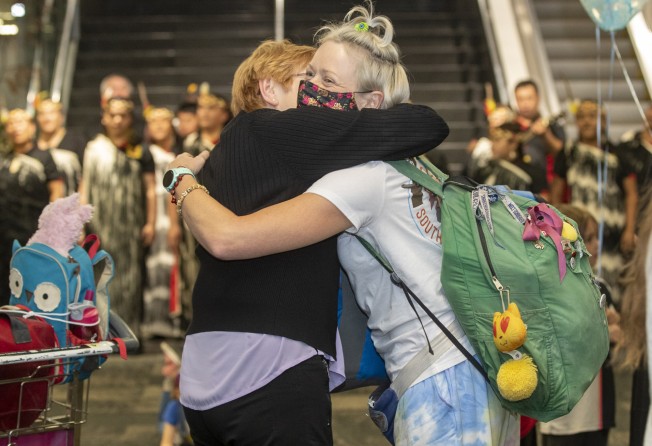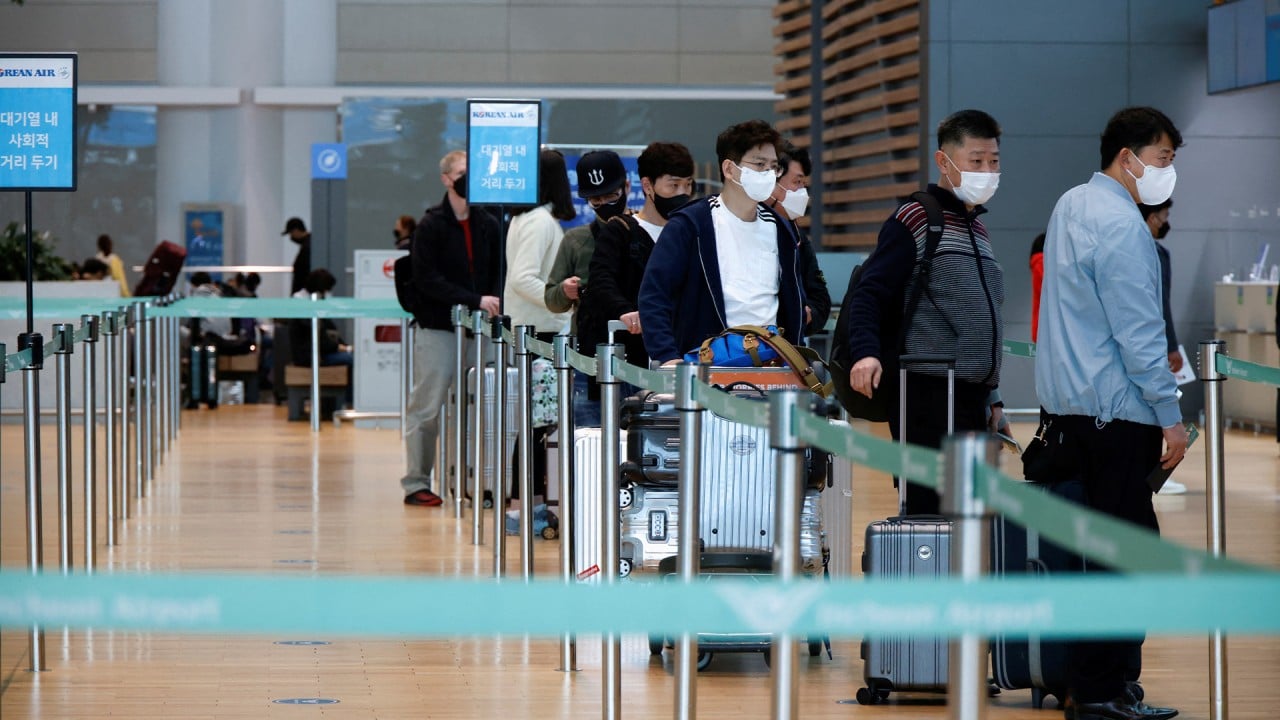
Coronavirus: South Korea lifts mask mandate despite concerns; New Zealand reopening to foreign tourists
- The decision on masks came just days ahead of newly elected President Yoon Suk-yeol’s inauguration on May 10 – and despite his team’s opposition
- New Zealand, meanwhile, wants to move away from mass tourism and entice more high-spending guests as it reopens to visitors after more than two years

South Korea said on Friday it will lift an outdoor face mask mandate next week in the country’s latest step to ease Covid-19 restrictions, despite opposition from the incoming government which labelled the decision “premature”.
Prime Minister Kim Boo-kyum said the decision was made as the government could “no longer look away” from the inconveniences experienced by its citizens when the country’s virus situation was stabilising.
People are still required to wear masks at events with 50 attendants or more, such as at rallies, concerts and sports stadiums, Kim said.

South Korea reported 50,568 new coronavirus cases on Friday, well down from the peak of more than 620,000 a day in mid-March.
The decision came just days ahead of newly elected President Yoon Suk-yeol’s inauguration on May 10 and despite his team’s opposition, prompting them to immediately express regrets and concerns over the announcement.
“The transition team agrees with pushing for the lifting of mask-wearing mandate as part of efforts to return to normal life, but we have stressed multiple times that removing the outdoor mask mandate at this point would be premature,” a spokesman for Yoon’s team told a briefing.
Ahn Cheol-soo, the head of Yoon’s transition team, had said earlier this week that the new government will consider going mask-free outdoors around the end of May.
South Korea has already scrapped most of its pandemic-related precautions, including a midnight curfew on restaurants and other businesses.
The country has largely managed to limit deaths and critical cases through widespread vaccinations, and it has scaled back the aggressive tracing and containment efforts that made it a mitigation success story from most of the first two years of the pandemic.
Nearly 87 per cent of South Korea’s 52 million population are fully vaccinated, with 65 per cent having also had a booster, according to the Korea Disease Control and Prevention Agency data.

New Zealand prepares to welcome foreign visitors
New Zealand is preparing to throw open its borders after more than two years, with tourism operators rehiring guides, dusting out souvenir shops, and getting ready to welcome back international visitors beginning on May 2 – so long as they can produce proof of vaccination and a negative pre-departure test.
But they do not expect a rapid return to the old normal, when hordes of foreigners packed the most popular sites and stretched infrastructure to breaking point.
In fact, the government wants to move away from the mass tourism that trampled New Zealand’s pristine landscapes before the pandemic. It is considering charging foreigners to visit unique areas, and wants to entice more high-spending guests who will stay longer and pay for special experiences. The changes under discussion echo those implemented across the Pacific in Hawaii, where tourists pay fees to visit fragile natural sites in an effort to make tourism more sustainable.

For now those issues are not so pressing. Places like Milford Sound, an otherworldly corner of New Zealand’s South Island famed for its rugged beauty, will most likely be devoid of crowds through the upcoming winter season. With its sheer cliffs, cascading waterfalls, and inky fjord, Milford was once dubbed “the eighth wonder of the world” by the writer Rudyard Kipling.
“Pre-Covid, there were close to 900,000 visitors to Milford a year,” said Mark Quickfall, owner of Totally Tourism, which operates a range of adventure and sightseeing businesses in the South Island. “We would be lucky to have 20 per cent of that at the moment. Destinations will be under a lot less pressure. Tourists will get a great experience.”
There is excitement and relief at the revival of tourism, which before the pandemic generated more foreign income for New Zealand than its dairy industry. In 2019 it directly contributed 5.6 per cent to annual gross domestic product and employed 8.1 per cent of the country’s workforce.
Still, competition for travellers will be intense. Look no further than Australia, which began opening its borders in February but is yet to experience a significant increase in visitors.
Both Australia and New Zealand rely heavily on Chinese tourists, who are unlikely to be allowed to leave their country until 2023. There is also reluctance to commit to long-haul travel among US tourists, which represent the other significant share of the countries’ tourism economies.
Many travellers may also wait until the summer season begins in October.

The Tourism Export Council, which represents inbound operators, forecasts that in the coming year arrivals will be just over half of pre-Covid numbers. By 2025, it predicts 3.2 million annual overseas visitors – a number that would still fall short of the 3.9 million who came in 2019.
“The opening of borders isn’t a silver bullet to recovery. There are lots of things that need to come into play, and we anticipate a really slow and steady return to a new normal. It’s going to take some time,” says Rebecca Ingram, chief executive at Tourism Industry Aotearoa, an industry body that represents operators across the country.
Tourism won’t return to the way it was
One issue will be airlines reintegrating routes to New Zealand into their schedules. Another hurdle will be rebuilding the local tourism workforce, which has shed some 65,000 employees since 2019 – including many migrants who have left the country.
“Tourism won’t return to the way it was,” Tourism Minister Stuart Nash told a conference in March. “It was unsustainable, and some of our communities were bearing the brunt of its impact.”
Reporting by Reuters, Bloomberg
